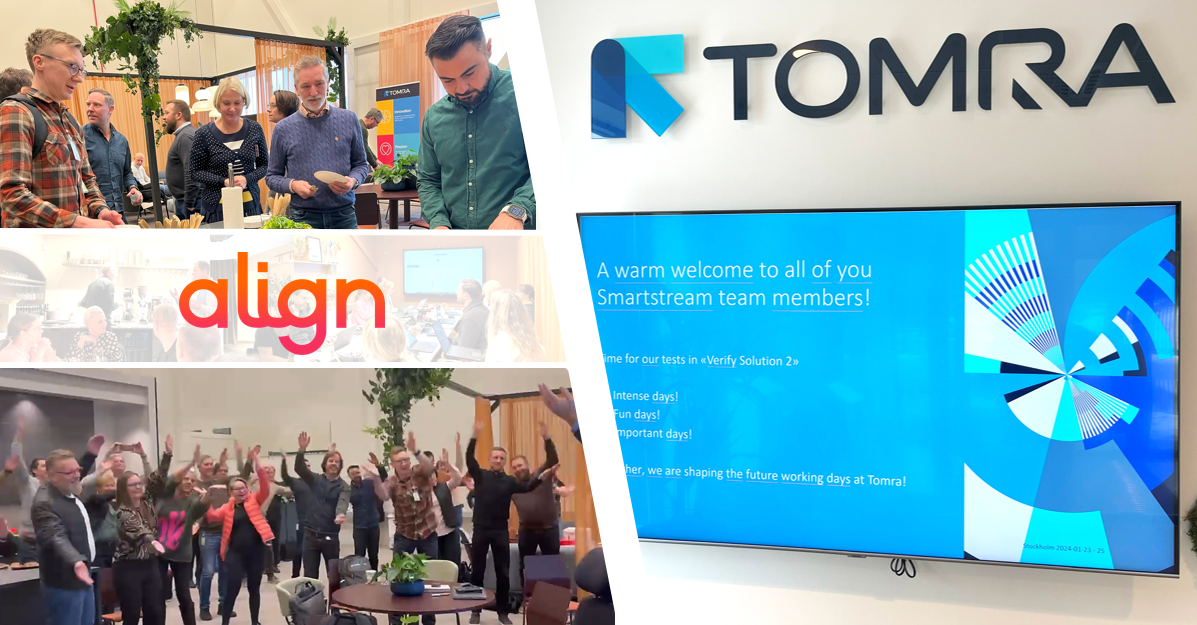In the beginning of May, as you may have noticed here on LinkedIn, TOMRA Northern Europe Collection’s (”TOMRA NOE”) seven countries went live with IFS Cloud after a tough, exciting, and successful project. Many have requested more information: why did it go well, what could have been done even better, what pitfalls should be avoided, etc.
If you would prefer reading this in Swedish, please go the Swedish version
What stands out most from both surveys and individual conversations and interviews is that the project group had fun together! This fostered a collaborative spirit free of prestige between countries, among the different process groups, as well as between the various involved parties. TOMRA NOE itself has a great culture, and an organization that is not afraid to handle the unexpected. The team received an excessive dose of this when TOMRA was hit by a major cyberattack in the summer of 2023, making the replacement of what is often referred to as the heart (the ERP system) of a company’s system solution feel tough but definitely doable in comparison…
Historically, one of TOMRA NOE’s success factors has been doing things well, of course, but also not making things unnecessarily complicated. ”Keep it simple”. This was a goal and mantra used before the project, as well as continuously during it. The aim was to find ways to work that made it as easy as possible to implement them in the application, which in turn increases the likelihood that they are actually carried out in the system at all.
Another clear goal was to use the standard code whenever possible, ”stay close to standard,” which is now more relevant than ever, considering the advantage of being able to quickly and smoothly follow new versions of the system.
These two goals may seem completely natural, but they were both important and comforting to return to in situations where the project, or parts of it, felt particularly tough. They also served as good, and universally accepted, arguments when country-specific requirements came in, and not the least: They helped us make important prioritizations, where the assessment of ”nice to have vs. need to have” was consistently applied. In line with this, it was continuously emphasized that we would absolutely go live with a truly modern and good solution, but also, that it would likely not be perfect on day one. Instead, it will serve as a foundation for continuous future development. This allowed us to focus on what was critical to the business while still achieving the goal of going live with a solid, yet likely not perfect, solution on May 6.
Even though it was the competent people in TOMRA’s project group who did the heavy lifting, it is worth highlighting the importance of an engaged management on the customer’s side, taking ownership of the project. And who, together with the project’s management, can stand firm to ensure that the goals defined above are secured. In this project, TOMRA’s management, as well as the project’s steering group at large, with representation from TOMRA, IFS, and Align, truly did their utmost to facilitate the project. It’s not always easy, regardless of mandate, making miracles, but just the sense of willingness, interest, and drive from above is sensed throughout the organization and makes a difference.
A cooperative and clear collaboration between the different players in the project is crucial. This certainly existed in this project. We trusted each other, shared information, and wanted to move forward. The experience is that the regular investment in weekly meetings (during the four most intense months) with the entire project group of over 50 people was instrumental. Simple meetings, lots of information, and over time also lots of repetition, ensured that (almost😊) everyone shared a clear picture of where we were heading, why, what was going to happen, and when. It was especially important to be clear about: what is going to happen in the next two weeks.
It’s naturally difficult at the start of a project to get everyone to understand the new solution. In TOMRA NOE’s case, the organization had been working with IFS version 7.5 for many years and knew everything about how things worked there. Adapting to IFS Cloud’s architecture and usage takes time, which means many of the early decisions regarding the solution and data were made on somewhat uncertain grounds. It wasn’t until the third phase of the IFS methodology (out of five), Establish Solution, that TOMRA NOE’s project group fully came on board, and began to realize through real testing on actual data what worked well and what didn’t. This is hard to completely avoid, but it’s still worth being aware of.
A key to success was the structured testing done in the aforementioned third project phase, with TOMRA gradually taking on more responsibility. It was wonderful and clear to see the development, how the project participants’ Cloud expertise grew, while also realizing: ”Oh, we’re not done yet – a lot of work remains.” This is where expertise in the new solution expanded from being primarily within the core group to reaching all countries’ project representatives – the countries began to drive even more clearly (still with the goal of reaching the same base solution, possibly with a certain few dialectal differences). The first two test rounds were done together with everyone gathered in Sweden, while the last round was delegated to the countries to manage themselves. It was tough but very rewarding, and it quickly felt like we had made the right decision on that test logistic setup: The first two tests (called Verify Solution 1 and 2) created, among other things, a good platform for communication making sure to create ONE team, while the third and final (Solution Acceptance Test, SAT) fully established the country-level ownership.
One area that required substantial work was the service agreements. These are core to the customer’s business and exist in thousands. The architecture around these has been completely redesigned between versions 7.5 and Cloud, as well as the work order structure. As expected, this became the project’s major time challenge in terms of migration. And yes, early focus not only on process but also on data is necessary to avoid a time crunch at the end, but it’s also clear how ”correct” data facilitates understanding of functionality: ”Oh, we can’t handle customer X that way, it doesn’t work with their requirements…”
Like almost all companies today, TOMRA NOE is a lean organization. This means time challenges when the business and daily operations must continue as usual while time must also be allocated to the implementation project. Individual members have worked hard and made heroic efforts, absolutely, but everyone’s commitment and focus on collaboration made it possible to keep to the schedule despite everything else happening. Resources from IFS, Align, and TOMRA were able to assist each other, which was absolutely essential.
Then there’s the classic issue with business document layouts; if possible, start looking at them early to ensure everything is neat and tidy well before going live. Similarly, integration work is challenging, where it’s sometimes ”impossible” to even perform real tests until parties, such as customers and suppliers, receive files from the actual production environment to their own counterparts. Layouts and integrations bring to mind customizations, where TOMRA NOE has managed to keep these to a minimum, thereby enabling a future as ”evergreen.” The idea is to already this fall upgrade from the current release 23R1 to 24R1, where after good discussions with IFS R&D, the customer also understands that improvements, particularly in one of the customer’s important workflows, are coming.
This brings us to the continuation, because naturally there is one. Everything isn’t smooth sailing just because the go-live has been completed. Configurations are continuously made to ease workflows. Adjustments and corrections as well. And as mentioned, a new version update will be done during the year, alongside setting the more long-term plan that will likely include the use of new IFS modules, changed and improved usage of existing ones.
The customer’s CFO, Mattias Hecter, summarizes the experiences like this:
”A great commitment from everyone involved in the project, where we had a high degree of transparency with each other – ’Brutally honest in a kind way.’ This approach, combined with striving towards the standard solution and focusing on what is business-critical with the knowledge that an ’evergreen’ system is under continuous development, provided good conditions for making decisions that allowed us to maintain the schedule. Now we have a modern tool in place – I’m proud of what we’ve achieved together.”
In summary, TOMRA NOE is now in a positive position system-wise:
- The go-live occurred on the scheduled date!
- They are operating with a modern tool, almost entirely according to the standard solution.
- They can thus agilely follow new versions, without additional major upgrade projects.
- Security is presumably much greater now, as old servers have been replaced with new ones in IFS’s modern cloud solution.
- Now it’s about, as an organization and in the application, continuing to develop step by step in line with the company’s strategy and market demands.
As you can tell: Exciting and likely positive indeed days and years await – and as you know, TOMRA’s products also contribute to a better environment!
Many thanks to everyone involved at TOMRA and IFS, thank you for an outstandingly good collaboration! Thanks to the mentioned cooperation, the right attitude, and the great collective competence, this wasn’t just a tough journey. Above all it was a really fun project to be a part of! A special thanks to TOMRA for entrusting us to participate. Now we look forward to the next step together.
Would you prefer reading this in Swedish? Go to the Swedish version

